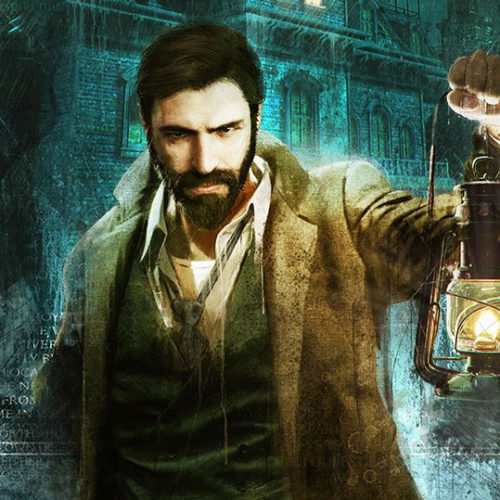All aboard the crazy train.
While I have known about Cthulhu for years, I have never really played many games based on the H.P. Lovecraft lore. I know there is a pen and paper RPG and I’m a big fan of Dungeons & Dragons, and I have seen a few horror games based on the old god. Finally, I get to experience this franchise first hand in the Cyanide Studio’s Call of Cthulhu. While a little rough around the edges, I found myself really enjoying this hybrid RPG adventure game.
Set in 1924, players take on the role of Edward Pierce, a World War I veteran who has turned into a private investigator. He takes a case from a man saying his daughter, her husband, and her child burned up in a house fire on a remote island off the coast of Boston. The only problem is, he doesn’t believe it was an accident and to top it all off, he received a disturbing painting in the mail a few days after the death of his daughter. A painting that he knows his daughter painted. Edward makes his way to the island to investigate the mansion and see what really happened there. Of course, a lot more is in store for him.

Platforms: PC, XB1, PS4
MSRP: $59.99
Price I’d pay: $59.99
Taking a page out of the pen and paper RPG, Call of Cthulhu relies on dice rolls and stats for pretty much everything. It all stems from Edward’s abilities which come in the form of seven main attributes: Strength, Investigation, Occult, Eloquence, Medicine, Spot Hidden, and Psychology. Each of these can be upgraded via skill points that are earned playing through the story, and the higher the attribute, the more successful Edward will be at investigating in different ways. Want to lock pick a door? Have his Investigation stat high. Want to identify an ancient language? Learn more about the Occult. This is an RPG at heart surrounded by an adventure game shell.
I say that because this is most certainly an adventure game. I was actually taken back when I first booted this game up and played the first couple of hours. I hadn’t fought anything, I hadn’t pulled out a gun, I honestly hadn’t done much action. It was a lot of investigating and talking to people using my different stats to either sneak into an area or use brute force to either break in or talk my way through. I was thinking this was going to be a horror first person shooter, and when I got deeper in, I realized this is much more than that.
Since Edward is a private eye, he will be doing a lot of investigating. This includes recreating a crime scene to get a better view of what happened. This allows him to piece together clues and figure out what happened at a given time. This is done in the form of a special investigation mode that allows the player to search an area and interact with the environment to find clues. Along with this, with a higher Spot Hidden skill, he can find otherwise hidden items that can help with the investigation. When I say “help with the investigation” it all revolves around dialog options. The more I investigated and gathered clues, the more I could bring up during a dialog with an NPC. This could work to my advantage when wanting either more information or getting an item or access to a new area. Of course, a lot of this changes a bit once more of the horror aspects come into play.
At a certain point, it becomes more of a stealth game where Edward must avoid detection from enemies. While not overly difficult, there were a few times I was spotted when I didn’t think they should have been able to see me. Along with that, Edward will begin seeing the effects of the horrors and start to suffer from insanity. This is governed by seeing disturbing things or being in places that could possibly freak him out. Of course, the game tells the player to avoid these situations, but in many instances, I couldn’t help it and was forced to let Edward brave the insanity for a bit to get out of hairy situations. Panic attacks and visions were only a few things that Edward could suffer from. He could be finding clues that aren’t really there or seeing monsters that are all in his head. It really sets up a nice horror feel and has a wonderfully creepy vibe to the entire thing.

Visually, the game is a bit lacking. It looks like a mid tier 360 or PS3 game at times with some facial animations being a bit wonky or not working at all sometimes. The atmosphere is really well done and the lighting really sets the mood. It’s not the best looking game, but it most certainly has the style of a good horror game.
I reviewed the PC version on my GTX 1060 card with an i5 6600k processor. On the “Epic” settings it worked fairly well. The game does have some performance issues with some slow down here and there and with a little fine tuning, it was running just fine. It has full controller support on PC and that was how I played the majority of it.
At the end of the day, Call of Cthulhu is a pretty fun game. I enjoyed my time with it throughout and it really had me going every time I booted it up. Sure, it’s not the best looking or the smoothest playing game, but it has the atmosphere and some interesting mechanics that I think any horror fan should check out. I was expecting something completely different from what I had thought this game to be and what I got, I realized I liked way more that what I expected.
Review copy of game provided by publisher.
